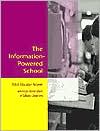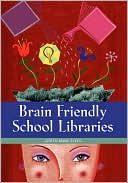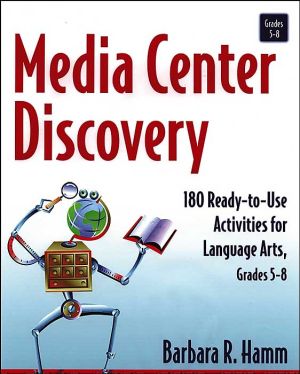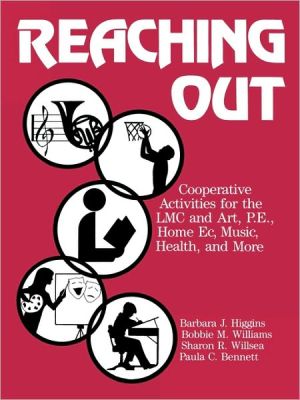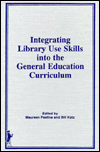Information-Powered School
This book draws from the experiences of teachers and library media specialists working together on information literacy in 700 schools serving impoverished communities around the country. The book offers a guide for implementing similar programs. It outlines a plan for school library media specialties and teachers to share the responsibilities of planning, instruction, and evaluation; and it advises on building support among teachers and administrators and integrating information literacy and...
Search in google:
This book draws from the experiences of teachers and library media specialists working together on information literacy in 700 schools serving impoverished communities around the country. The book offers a guide for implementing similar programs. It outlines a plan for school library media specialties and teachers to share the responsibilities of planning, instruction, and evaluation; and it advises on building support among teachers and administrators and integrating information literacy and technology into the curriculum. Annotation © Book News, Inc., Portland, OR VOYA Since the publication of Information Power:Building Partnerships for Learning (ALA, 1998/VOYA August 1999), school librarians have had a vision of the way school libraries can and should function. With the publication of this new work, they finally have a guide that takes the concepts presented in Information Power and breaks them down into small, doable steps with suggestions on how to sell the changes to others and how to implement them into the library program. Included are more than forty forms and charts that can be used and reproduced. Each chapter ends with a bibliography of useful resources, including current books, periodical articles, and Web sites. The suggestions and forms available in this book will guide librarians in finding support for a common vision and aligning their library program with school improvement—two essential elements for success. If schools use only some of the suggestions available in the text, their library programs should improve. School librarians who did not know where to start now have a resource to launch them on their way to making Information Power a reality in their community. This essential companion to Information Power is particularly useful because it is written by Library Power Initiative participants who have implemented the program successfully in selected school districts across the country. They provide a wonderful resource for all librarians who want to improve their library programs. Index. Charts. Further Reading. Appendix. 2001, ALA Editions, 138p, $35 Oversize pb. Ages Adult. Reviewer:Chris Carlson—VOYA, December 2001 (Vol. 24, No. 5)
Preface1Using the Information-Powered School12Leadership and the Practitioner43Information-Powered Professional Development164Professional Collaboration for Information Literacy365Collection Mapping: One Step in the Collection Development Process526Curriculum Mapping657Enhancing Student Learning with Technology748Flexible Access: Essential to Active Learning839Refurbishing for Learning9410Community Engagement for Information Power11Developing Resources for the Information-Powered School114App. A: National Library Power Program Sites129App. B: Contributing Authors133Index135
\ VOYASince the publication of Information Power:Building Partnerships for Learning (ALA, 1998/VOYA August 1999), school librarians have had a vision of the way school libraries can and should function. With the publication of this new work, they finally have a guide that takes the concepts presented in Information Power and breaks them down into small, doable steps with suggestions on how to sell the changes to others and how to implement them into the library program. Included are more than forty forms and charts that can be used and reproduced. Each chapter ends with a bibliography of useful resources, including current books, periodical articles, and Web sites. The suggestions and forms available in this book will guide librarians in finding support for a common vision and aligning their library program with school improvement—two essential elements for success. If schools use only some of the suggestions available in the text, their library programs should improve. School librarians who did not know where to start now have a resource to launch them on their way to making Information Power a reality in their community. This essential companion to Information Power is particularly useful because it is written by Library Power Initiative participants who have implemented the program successfully in selected school districts across the country. They provide a wonderful resource for all librarians who want to improve their library programs. Index. Charts. Further Reading. Appendix. 2001, ALA Editions, 138p, $35 Oversize pb. Ages Adult. Reviewer:Chris Carlson—VOYA, December 2001 (Vol. 24, No. 5)\ \ \ \ \ School Library JournalDesigned as a "tool kit," this volume presents a variety of articles highlighting various aspects and activities of Information Powered Schools and giving tips for putting the principles and practices to work. It draws on experiences of those communities that have participated in the DeWitt Wallace-Reader's Digest initiative to develop a vision for improving teaching and learning through the library program, mobilize community support for it, and make a commitment to providing full-time librarians. Checklists, surveys, and planning forms are included to determine the status of current practices. The collaborative planning worksheets, request forms, unit evaluation and collaborative-unit evaluation forms will be of special interest to librarians already involved in this process. Answers to questions about curriculum and collection mapping and development are supported with worksheets for data collection. Developing resources for the information-powered school focus on strategies for self-evaluation, the use of state and regional guidelines, packaging a proposal for funding, budgeting, and community involvement. Print and Web resources are included. Copyright 2001 Cahners Business Information.\ \
